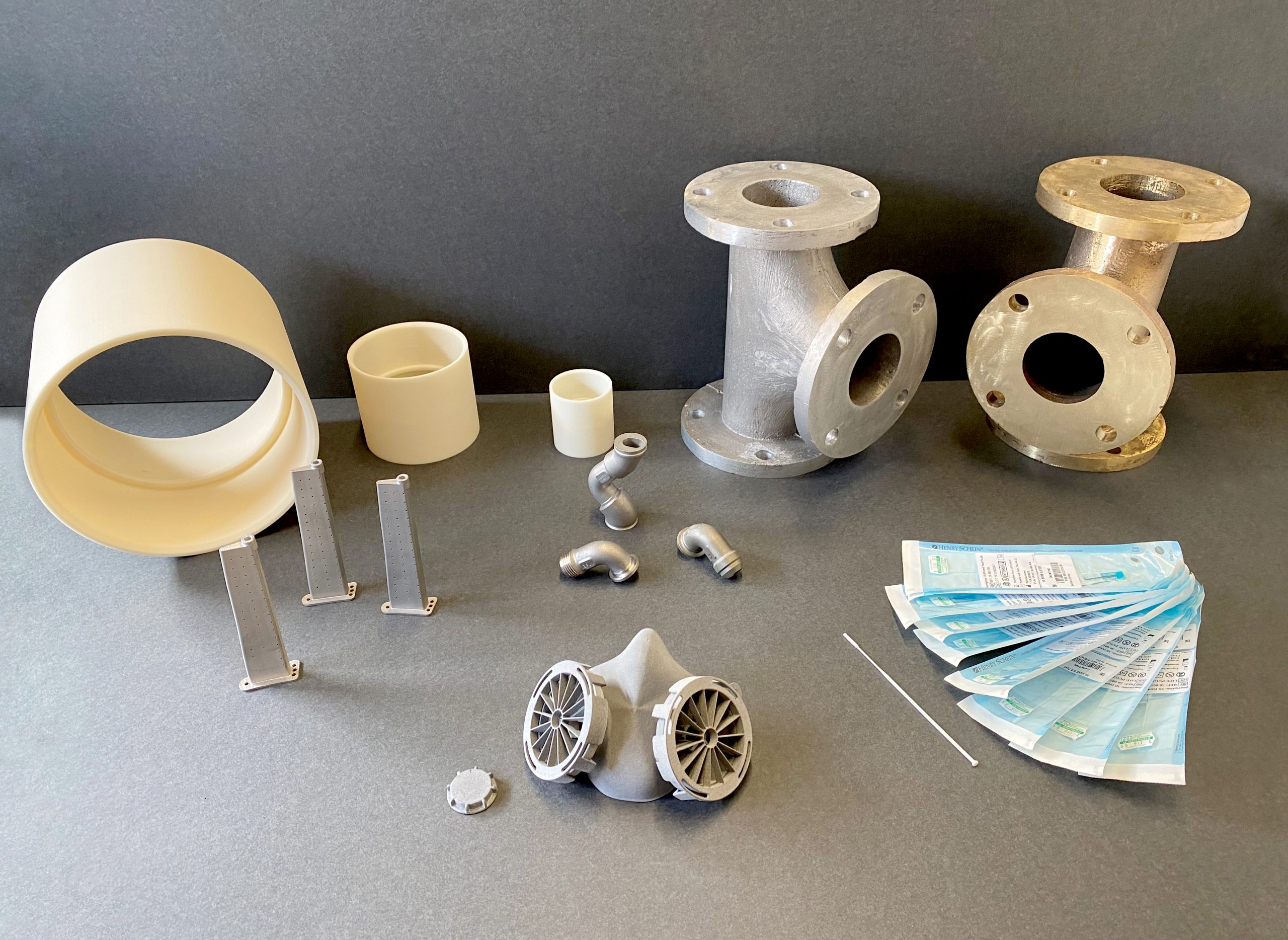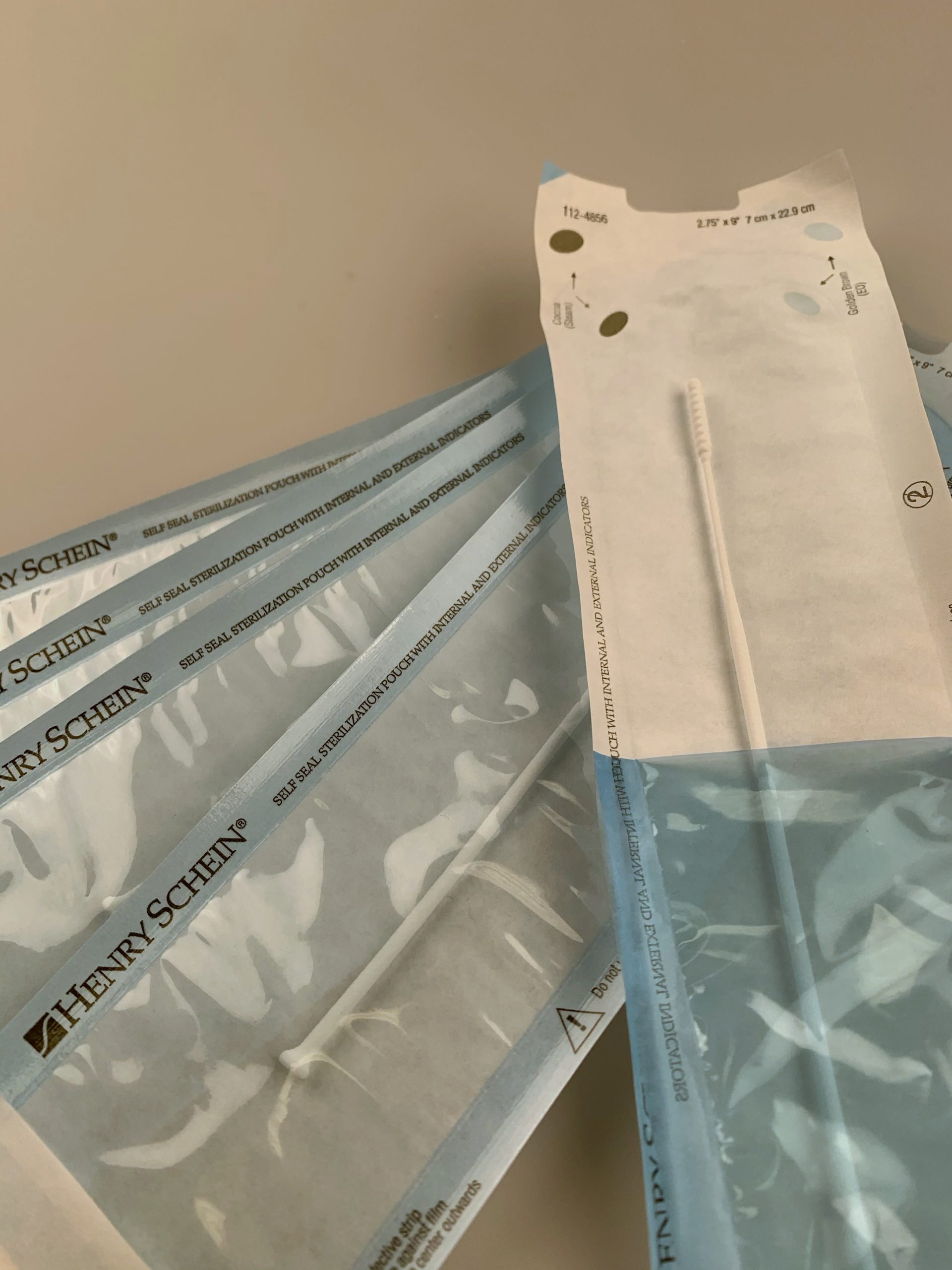Born out of the US 3D printing industry’s Covid-19 response effort coordinated by America Makes, the 3D printing national accelerator’s Advanced Manufacturing Crisis Production Response (AMCPR) program is seeking to showcase the role additive manufacturing can play in bolstering supply chains beyond the pandemic.
Having received $4.7 million from the US Department of Defense to accelerate the program, AMCPR recently completed a series of crisis scenario tests to assess the program’s ability to match advanced manufacturing capabilities with the demands of potential crises that could arise in the future.
I sat down with America Makes’ Director of Operations, Alexander Steeb, and Director of Communications & Public Affairs, Andrew Resnick, to find out the next steps for the program and how America Makes’ public-private partnership model can facilitate greater adoption of 3D printing and advanced manufacturing within supply chains.

What is the AMCPR program?
America Makes’ AMCPR program is a strategic infrastructure and manufacturing community for responding to crises with additive manufacturing. The program’s mission is to advance the US’ manufacturing supply chain resiliency and responsiveness, whilst preparing the nation for future crises.
“We recognized early that the supply chain disruptions left and right, due to initially China shutting down and then the rest of the world, saw the maker community in general start responding with enthusiasm,” says Steeb. “However, some of our members reached out to us saying that some of the things they had seen were potentially not safe. This catalyzed us to apply our private-public partnership to really put some boundaries and guidance out there.”
This prompted Steeb and his team to reach out to the likes of the US Food and Drug Administration (FDA), the Department of Veteran Affairs, and the National Institutes of Health (NIH) to come up with guidance surrounding performance and safety considerations for 3D printed products being manufactured to fill supply chain gaps for high-demand items such as personal protective equipment (PPE) and nasal swabs.
After identifying the needs of the healthcare and other related sectors, America Makes expanded the Covid-19 response effort to form the AMCPR, creating an online Exchange portal capable of matching and coordinating manufacturing proficiencies with product demand.
“So far, we’ve matched hundreds of thousands of pieces of PPE through our efforts,” continues Steeb. “As an organization, we have been able to collaborate with the NIH to put safe, tested products on the portal which have been downloaded millions of times, and as a result of working together with the task force of the VA, NIH and FDA a lot of positive momentum has been generated in terms of performance, product, and regulatory considerations.”
According to Steeb, the pandemic exposed a gap in the nation’s ability to respond to crises and provided an opportunity to showcase how additive manufacturing can play a significant role in improving supply chain resilience.
“Ultimately, we have bridged the gap with a tool that essentially aids in the response to the pandemic but also identifies the gaps in supply chain resiliency and how to solve these through distributed additive manufacturing.”
Next steps for the AMCPR program
During the AMCPR program, the Exchange’s end-to-end capabilities were tested and evaluated against a range of criteria, including design generation, design review, supplier production, and supplier distribution. Going forwards, the plan is to keep the AMCPR manufacturing ecosystem engaged and commence Phase Three of the program.
“As part of Phase Two, we’re building a playbook to really enhance the crisis response,” says Steeb. “There is still work to be done, and as such, we’ll be pursuing a Phase Three of AMCPR that will allow us to continue to exercise scenarios, build capabilities, and keep folks engaged. We firmly believe that it fits squarely with our mission to drive awareness around the strengths additive can play in distributed manufacturing.”
The AMCPR program has delivered products for the healthcare, energy and defense sectors using a combination of additive and conventional subtractive manufacturing processes. Going forward, the program’s capabilities will be expanded into other sectors.
“Mobility is potentially one that is interesting for us, it’s something that we’re looking at,” offers Steeb. “Space is potentially another area, although that isn’t really a crisis-type project. We will also look at geographical distribution, are there other parts of the country that we haven’t touched yet where we want to build regional capability as part of the crisis production response?”

Overcoming potential challenges
According to Steeb, it will be important to harness the momentum the AMCPR project gained throughout the pandemic and keep activity levels up within the program. Continued investment will also be important going forwards to enable the program to further expand and build upon its first two phases.
“There is plenty of focus around this topic in the nation as a whole, and I believe globally that this supply chain resiliency topic won’t go away after the pandemic,” he says. “We’ve had such a strong response and we expect to continue seeing continuous engagement and activity around this.”
When asked how the AMCPR program will address challenges surrounding regulation going forwards, Steeb says: “We have laid down those regulatory considerations and made them a part of our competency program to really evaluate the questions manufacturers need to ask themselves. We can provide convenient and consistent guidance around the topic to flesh it out more and really delve into these types of concerns, engaging with stakeholders to hash out specific regulatory considerations.”
Through the AMCPR program, America Makes will be able to quickly engage with stakeholders when a particular crisis hits to talk through the regulatory considerations for deploying additive manufacturing within specific industries or applications. This will then feed into providing guidance for the program’s wider ecosystem on what manufacturers may need to consider to make their products safe and fit for purpose.
According to Resnick, it is this ability to convene with stakeholders through public-private partnerships that ideally positions America Makes to coordinate the additive manufacturing crisis response in an unbiased and effective way.
“The structure of being a private-public partnership really puts us in a unique position to be able to approach this type of process in an unbiased way, so we can collect the information that is needed, reach out to regulatory agencies, and we have the relationships in place to know where the capabilities are to house 3D printing designs that can solve a crisis,” he explains.
“We can do that without a profit motive, and by tapping into our existing national networks with stakeholders and influencers who are creating that landscape, so there’s an expectation of where people can play, and how they need to play, to solve that crisis.”
One of the biggest takeaways from the AMCPR project, he says, is the ability to create a roadmap or “playbook” so that, when the next crisis happens, there is a framework in place for all parties involved to refer to.

AM’s role in bolstering supply chain resiliency
Whilst the Covid-19 pandemic in particular has exposed significant weaknesses in supply chains not just in the US, but across the globe, other events such as the recent blockage of the Suez Canal have also shone a spotlight on this area. Throw into the mix various global tariff impositions and discussions around the taxation of digital goods, and conventional supply chains are looking more than somewhat fragile as we emerge from the pandemic.
“I think distributed manufacturing as a topic is generally front and center to supply chains,” says Steeb. “That starts a second consideration of advanced manufacturing as a way of working smarter and all those things, and this attitude fits squarely with us as an institute. We are working with fellow institutes to develop competency and capability in this area, and I think with advanced manufacturing, and additive specifically, companies want to improve their understanding of where and when to deploy it.”
In Steeb’s view, further modularization of industry generally will require supply chain flexibility, and this is where he sees additive manufacturing playing a key role.
“Our mission is to accelerate the adoption of additive manufacturing, and in the same way the AMCPR is not constrained just to crises but is directed at supply chains in general,” he continues. “More and more the conversation is trending and drifting in the direction of supply chain resiliency, not just in terms of achieving lower prices, but also for the competitiveness of organizations.
He adds: “If you have a flexible supply chain link, that is the way you take risk out of the equation because of either geopolitical or geographical distribution. There’s also environmental elements to this by not tracking everything round the planet 15 times. So, there are lots of good reasons why organizations should adopt this approach and learn from the pandemic in general to make our supply chains more flexible.”
According to Steeb and Resnick, the key factor in scaling up the adoption of 3D printing within various supply chains is America Makes’ public-private partnership model, which enables the organization to engage with stakeholders and bridge the gap between the public and private spheres.
The pair hope that through this approach, the AMCPR project will not only provide a framework for how additive manufacturing can be deployed during future crisis scenarios, but will also pave the way for greater adoption of 3D printing within supply chains generally in order to achieve cost, efficiency, flexibility, and environmental gains.
Subscribe to the 3D Printing Industry newsletter for the latest news in additive manufacturing. You can also stay connected by following us on Twitter and liking us on Facebook.
Looking for a career in additive manufacturing? Visit 3D Printing Jobs for a selection of roles in the industry.
Subscribe to our YouTube channel for the latest 3D printing video shorts, reviews and webinar replays.
Featured image shows 3D printed parts from the AMCPR scenarios, (left to right): Scenario C, Earthquakes Earn Enmity – set of Hose Couplings, Scenario E, Veritable Vanes – Gas Turbine Vane Insert, Scenario B, Community Crushes COVID-19 – Facemask, Scenario D, Blackhawk Down – Fuel Elbow, Scenario F, Tooling Takes Too Much Time – T-Joint, Scenario A, Veterans Heath Administration to the Rescue – Swabs. Photo via America Makes.



